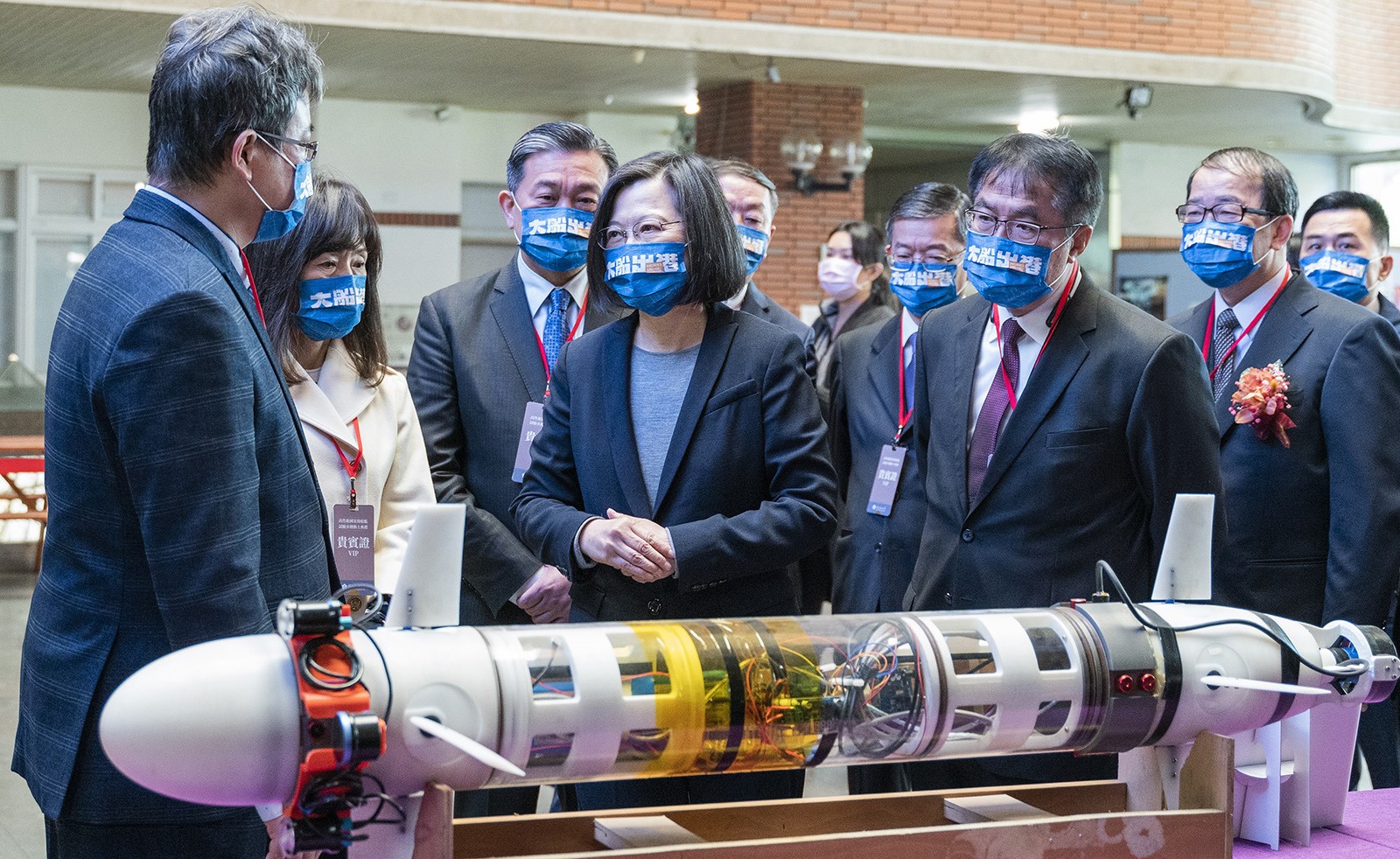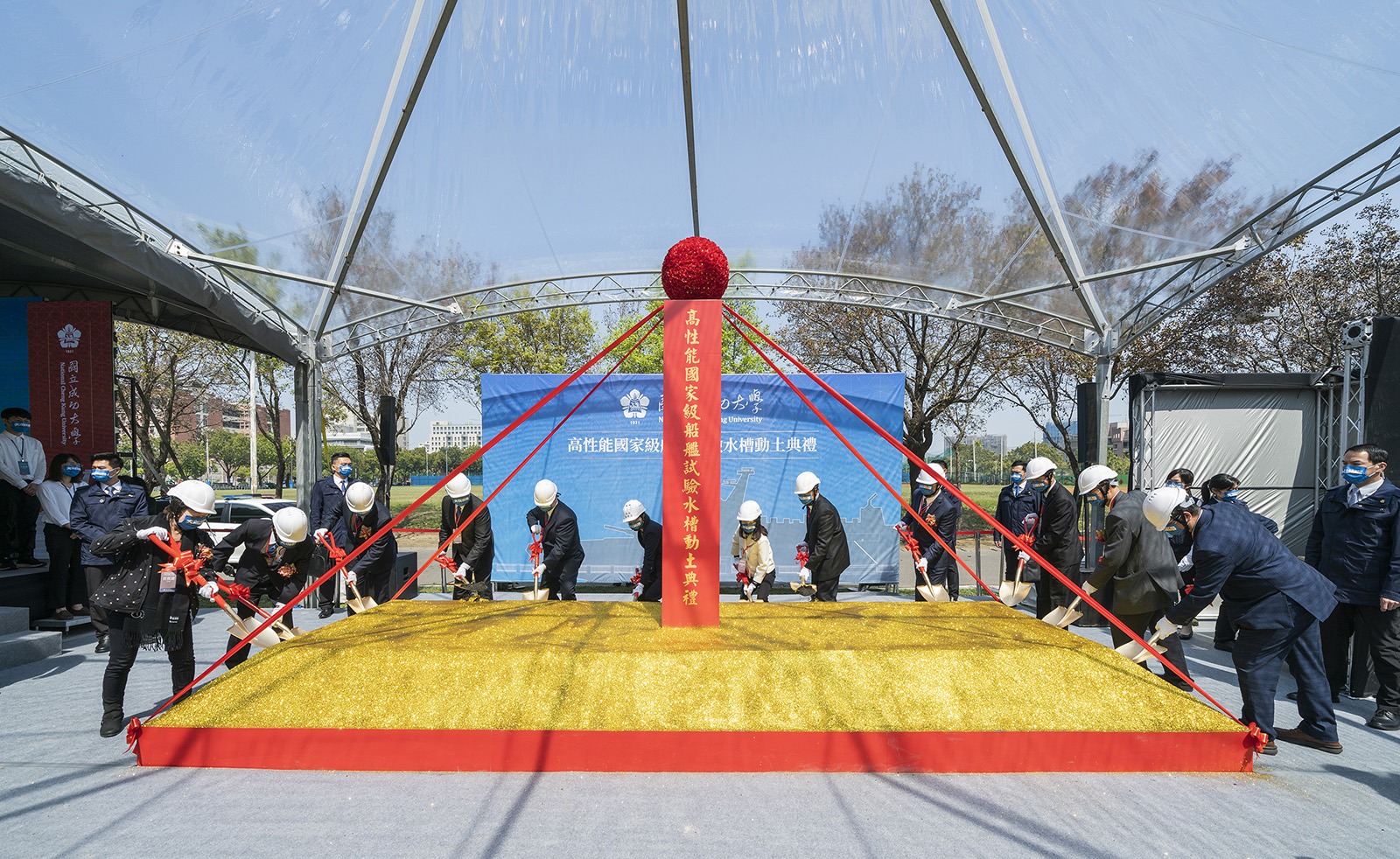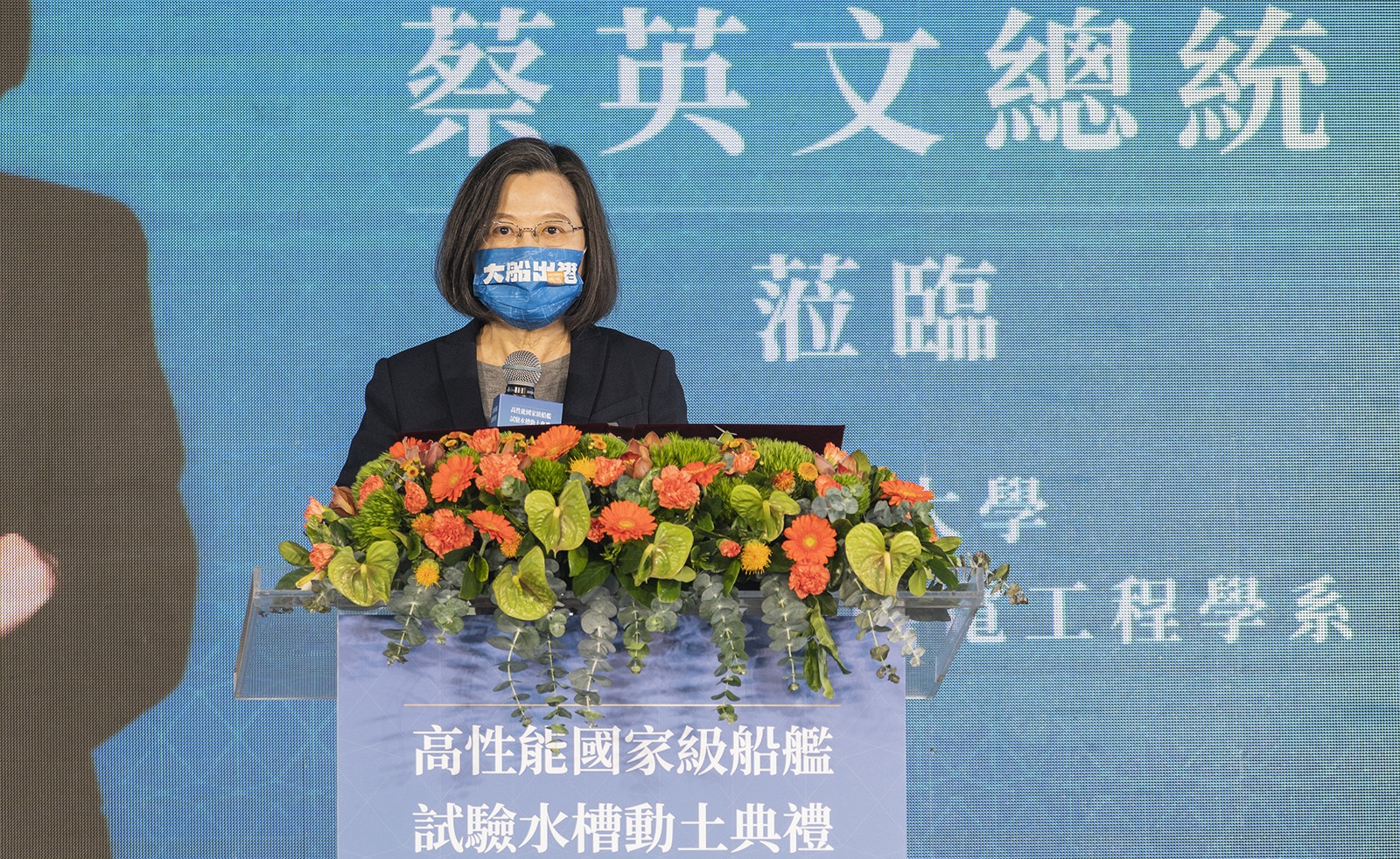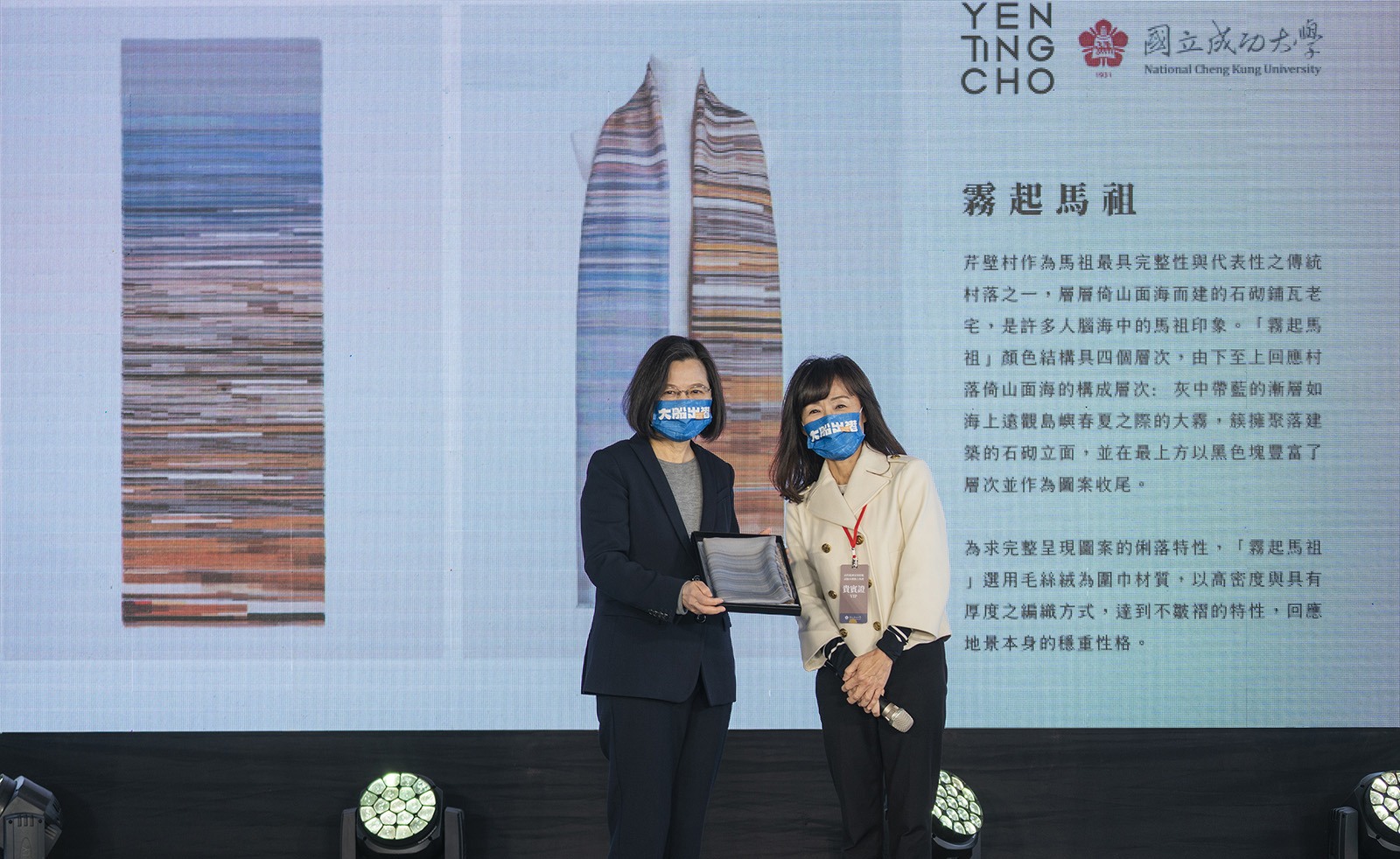Highlights
President Tsai Attends NCKU’s Groundbreaking for National Ship Model Test Basin Extension
On the morning of February 25, President Tsai attended the groundbreaking of “National High Performance Ship Model Test Basin” in NCKU. The basin was the collaborative result of NCKU, the Naval Shipbuilding Development Center, and CSBC Corporation, Taiwan. After the extension was completed, the length of the basin will be extended from the currently 165 meters to 285 meters, which was capable for both military and industrial experiments. In a long term, the basin would help reduce the research and development cost while ensuring the security of the key technics. “The National High Performance Ship Model Test Basin will be the pivot of domestically producing naval vessels,” President Tsai mentioned.
President Tsai appreciated NCKU, CSBC Corporation, Taiwan, and the Navy Ship Development Center for the efforts, and delivered her best wishes for the timely extension completion, so tests can be carried out as soon as possible, boosting the domestic shipbuilding industry and the design capabilities of our own naval vessels.
NCKU’s president Su said that meeting the needs of our society and country through technology research and development and talent cultivation has always been NCKU’s top priority. The extended basin will become the second-longest water tank in the world and the longest in Southeast Asia. With everyone’s help, she hoped the university can come up in the world.



